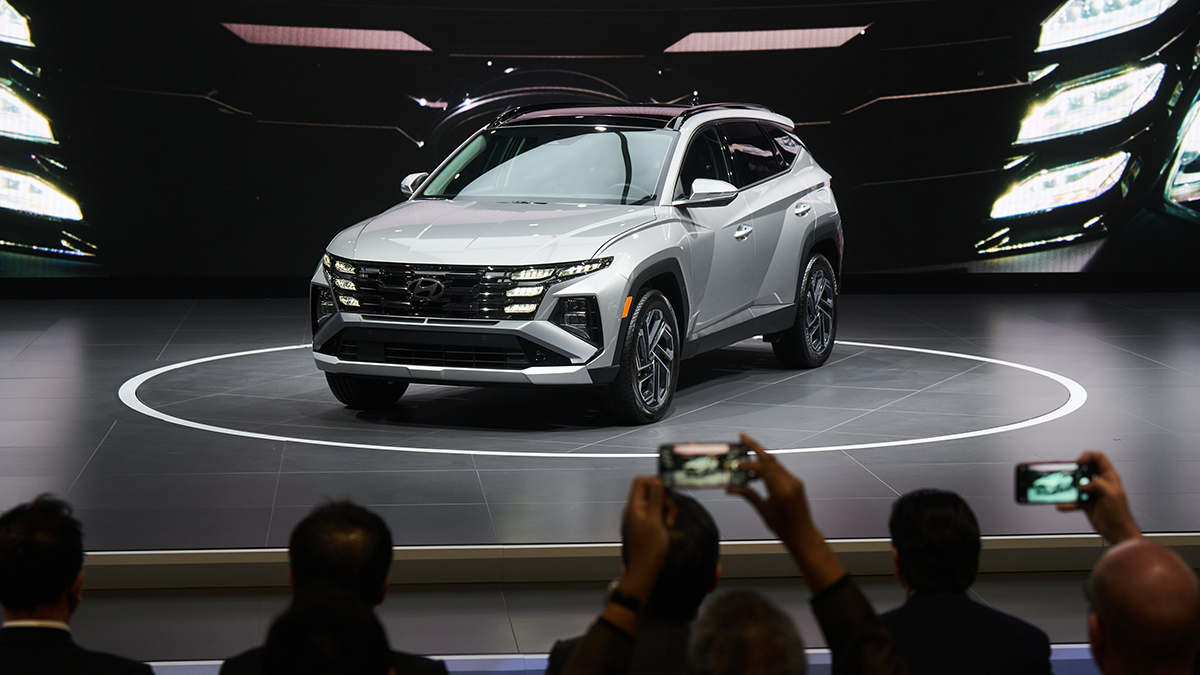LAS VEGAS -- TV makers are adding sexy new features like streaming Internet movies and 3-D capabilities this year, betting that they can keep consumers away from basic, no-frills sets, even in a weak economy.
The manufacturers are fighting an unhappy trend. DisplaySearch, a research firm, forecasts that global sales of LCD TVs, the most popular kind, will fall 16 percent in 2009 to $64 billion. That would be the first sales decline since the technology debuted in TVs in 2000.
To entice consumers to come back, manufacturers are touting relatively inexpensive advances. One is that many top-line and even some value-priced TVs will connect to the Internet.
Such TVs started appearing a year ago with limited functions, like being able to display news stories and weather reports. Now, back-end systems and partnerships to provide streaming movies are coming together.
For instance, LG Electronics Inc. and Vizio Corp. announced this week at the International Consumer Electronics Show that some of their TVs will be able to show video from Netflix Inc.'s streaming service. LG said the service would add $200 to $300 to the price of a TV. Panasonic Corp. and Sony Corp. TVs will show videos from Amazon.com Inc.'s Unbox service.
Yahoo Inc. is emerging as the leading provider of other Internet data services to TVs, through something it calls the Widget Engine. Sony, LG, Toshiba Corp. and Samsung Electronics Co. all plan to introduce TVs that can grab Flickr photos, YouTube videos and news stories through a broadband connection.
Two other new features cut across the top-tier TV models: improved handling of fast-moving scenes and a reduction of power use.
Business
The latest business news.
Last year, manufacturers touted sets that display 120 frames per second, for sharper and smoother action and panning scenes. TV signals and discs have only 24 to 30 frames per second, so the sets compute more frames to stick between the existing ones.
This year, most manufacturers are raising the bar to 240 frames per second, but not by computing more new frames. Instead, the backlight will switch on and off very quickly, fooling the eye into perceiving even smoother movement.
Manufacturers have also jumped on the opportunity to get their sets certified under the new, much tougher Energy Star requirements set by the U.S. Environmental Protection Agency. In November, the agency introduced limits for the power use of switched-on TVs. The old Energy Star rules only specified the power that TVs could use in standby mode, with the screen off.
The goal for the Energy Star program is to recognize the most energy-efficient 25 percent of a product category. But most new TVs announced at the show will meet the requirements, so the EPA will likely have to raise the bar.
Sony introduced what it called its "first green line" of LCD TVs. The "Eco Bravia" models will use 40 percent less power than last year's models, exceeding the latest Energy Star requirements. Samsung and Panasonic announced TVs with similar cuts in power consumption, without branding them as "green."
Samsung, the world's largest maker of TVs, is making a big push in LCD TVs that are backlit by light-emitting diodes, or LEDs, rather than the standard fluorescent tubes. This is less radical than dispensing with LCDs altogether to use a different technology known as organic LEDs, yet it promises power savings and eye-popping colors and contrast. LED sets have been on the market in very small quantities, held back by their higher cost.
"We are going to create the market" for LED TVs, said Jong Woo Park, president of the Korean company's digital media division. He didn't say what the new sets would cost.
These energy-saving touches give the new TVs a more subdued tenor than the industry offered last year at CES. Then, there was an emphasis on bigger screens and expensive emerging technologies like organic LEDs, which promise ultra-thin, ultra-bright TVs in the future.
"You can't be too thin. But will people pay extra for it in this economy?" asked Scott Ramirez, vice president of marketing for TVs at Toshiba America Consumer Products. "I have yet to find a person who will say that their flat panel is too fat."
Ramirez also said that while the industry likes to brag about screens with diagonal measurements as large as 150 inches, very few people buy sets costing more than $2,500. That means that practically all sets sold are 55 inches or less. The only major manufacturer that pushed the size envelope at CES this year was Sharp, which introduced an 82-inch screen to fill a gap between its models at 65 inches and 108 inches.
Perhaps the strangest development in TVs is this year's focus on sets capable of showing three dimensions. This idea has been touted since the 1950s. But interest has faded every time, and 3-D viewing has never quite moved beyond the gimmick stage, though the latest generation of digital cinema projectors has enabled widespread 3-D releases of some films.
This time there's a concerted effort from TV makers to make 3-D viewing in the home happen.
"I believe 3-D is the next big wave coming to the consumer electronics industry," said Woo Paik, chief technology officer at LG.
Panasonic Corp. is pushing the hardest, and wants the industry to unite on ways to get 3-D content to TVs. Many TV sets are already capable of showing 3-D images that can be viewed with special glasses. But there are no discs or disc players for 3-D content, nor are there 3-D broadcasts.
Panasonic wants to solve that problem by working with the Blu-ray Disc Association and other bodies to set standards for 3-D delivery systems, resulting in commercial products by next year, according to Yoshi Yamada, chairman and chief executive of Panasonic North America.



